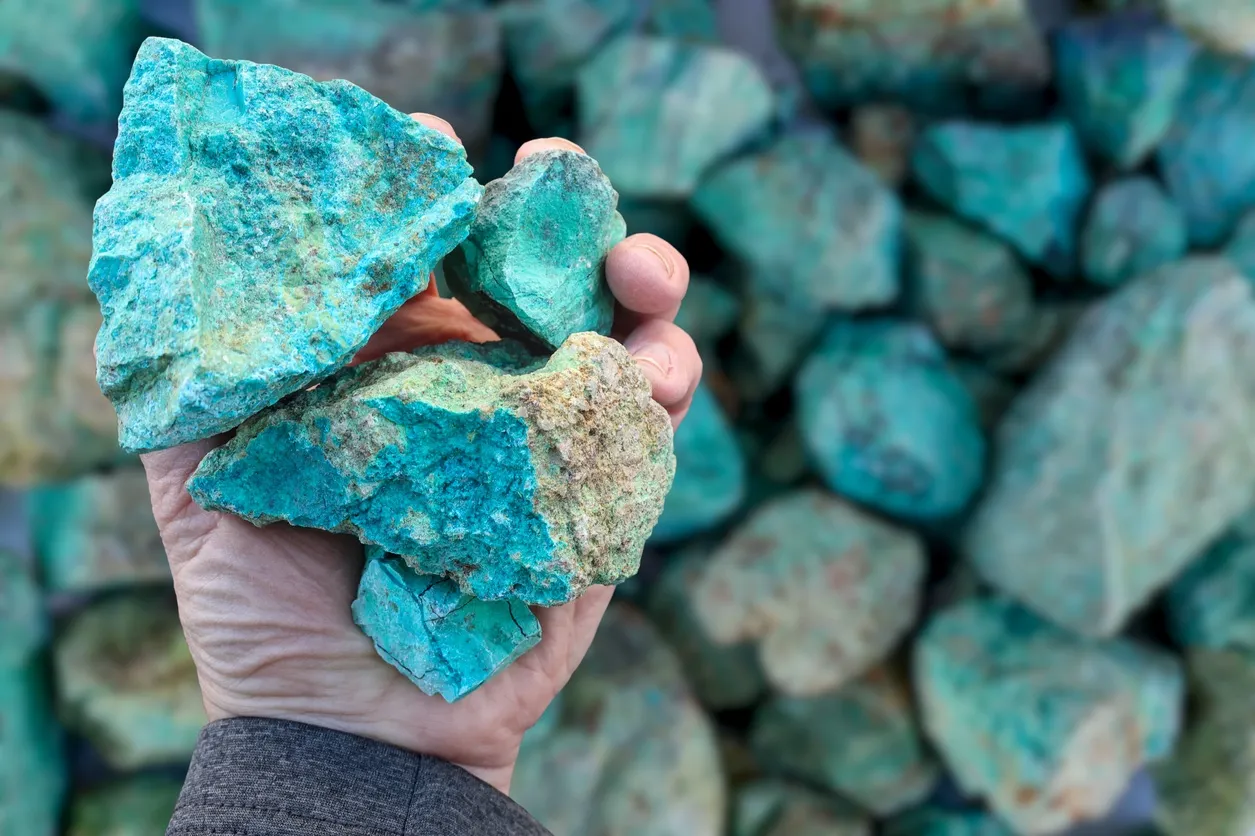

Vietnam possesses substantial rare earth resources; however, their application remains minimal, primarily limited to laboratory-scale or semi-industrial studies. Industrial-scale mining and processing of rare earth elements (REEs) are still in early stages, despite growing interest in their economic potential. Research has mainly focused on separating rare earth ores from different deposit types, with an emphasis on the most critical minerals: bastnaesite, monazite, and xenotime.
The Nam Xe North mine has been the focus of various studies, particularly concerning its two main types of ore: weathered ores and lode ores. The key rare earth mineral identified in the mine is bastnaesite, which is present in relatively modest amounts, ranging from 5% to 7%. Alongside this, the non-ore minerals found include barite, quartz, illite, kaolinite, feldspar, goethite, and chlorite.
In 1971, the Institute of Nonferrous Metallurgy conducted an early study on the weathered ores from the Nam Xe North mine. A sample analyzed during this study exhibited a rare earth oxide (REO) content of 14.8%. Using alternative magnetic separation and flotation circuits, researchers found that magnetic separation increased the concentrate's REO content to 19.5%. Meanwhile, flotation processing, which involved a rougher stage and five cleaning stages, yielded a final concentrate containing 18.5% REO.
Further research was conducted in 2013 by the National Institute of Mining - Metallurgy Science and Technology, focusing on the extraction of rare earth ores. In this study, a technological sample was found to contain 4.6% REO, along with 19.63% BaSO4, 0.15% CaF2, 21.8% SiO2, and 15.31% Fe. Through flotation processing, the researchers achieved a remarkable concentrate with over 30% REO content and a total recovery rate of 59.40%. Additionally, a barite concentrate containing 95% BaSO4 was recovered, with a commendable total recovery rate of 63.56%.
The Nam Xe South deposit boasts significant reserves, featuring proven reserves of 199,300 tonnes of rare earth oxides (REO) and probable reserves totaling 3.0 million tonnes of REO. The concentrations of total rare earth elements (TREE) within the deposit vary, with calciocarbonatite samples exhibiting levels ranging from 3,400 parts per million (ppm) to 6,100 ppm, while ferrocarbonatite samples show even higher concentrations, between 43,200 ppm and 163,900 ppm.
The primary rare earth element-bearing mineral found in the deposit is parisite, complemented by lesser amounts of bastnaesite and synchysite. In addition to these key minerals, the deposit also contains baryte-celestine, calcite, biotite, and magnetite.
Beneficiation research conducted on the raw ore, which contains 7-10% REO, involved grinding the material and employing a direct flotation process utilizing sodium fluoride, dextrin, and liquid glass, modeled after the Mountain Pass circuit. This method successfully produced a rare earth concentrate with REO content ranging from 30% to 35%, achieving a recovery rate between 80% and 85%. Furthermore, a barite concentrate with 85% barium sulfate (BaSO4) was obtained, though it included around 7% REO and had a recovery rate of 54%.
A 2019 study by Robert Möckel and colleagues focused on optimizing the flotation process. The researchers implemented a two-step rougher flotation followed by a scavenger stage, wet regrinding of material to a particle size of less than 40 micrometers, and a three-step cleaner flotation. This optimized approach resulted in TREO concentrate grades exceeding 40 weight percent while keeping REE losses to a minimum, below 8%.
The Yen Phu rare earth mine in Vietnam boasts reserves of approximately 28,000 tonnes of rare earth oxides (REO). The primary rare earth mineral found at the site is xenotime, albeit in limited quantities. In terms of mineral composition, the ore contains iron minerals such as goethite and magnetite, which make up about 18-20% and 24-26% of the total ore, respectively. Additionally, the ore comprises 41-43% quartz, 3-5% kaolinite and chlorite, 2-4% feldspar, and 1-3% talc, leading to an average composition of approximately 1.2% REO, 33% iron, and 40% silicon dioxide.
Yen Phu serves as Vietnam's main rare earth mine, engaged in both the mining and processing of these valuable minerals. Despite being operational since 2019, the mine has faced challenges, resulting in a recovery rate of less than 50% REO. The tailings produced during the extraction process have been found to average around 0.7% REO.
The processing of the ore follows a comprehensive flowsheet that includes gravity concentration, magnetic separation, and flotation. The magnetic separation process is conducted in three stages to recover iron concentrate, while flotation techniques—comprising one rougher stage, three cleaner stages, and three scavenger stages—facilitate the extraction of rare earth minerals. Various chemicals are employed in this processing, including soda ash to maintain a pH level of 9, water glass, and lignin, along with corn starch as depressants, and Berol and diesel oil as collectors.
Despite significant rare earth reserves, Vietnam’s mining and processing industry remains underdeveloped. Further research is necessary to refine technological processes and develop proper equipment for each ore type. This will help maximize resource recovery, improve economic efficiency, and ensure environmental sustainability in Vietnam and beyond.
Vietnam has tremendous rare earth potential, distributed mainly in the Northwest, including Nam Xe, Dong Pao, Muong Hum, and Yen Bai. There are many research projects on rare earth ores of different types globally, but the focus is mainly on the essential minerals, including monazite, xenotime, and bastnaesite. To fully utilize these resources, further technological advancements and large-scale industrial applications are required to enhance efficiency and sustainability in Vietnam's rare earth industry.